Impossible angles: a new show of Arnaldo Pomodoro’s sculptures at Tornabuoni Art

It's hard not to feel a little uneasy taking in the cracked, queasy shapes that comprise Arnaldo Pomodoro's sculptures. The Italian's works – resplendent in burnished bronze – are highly intricate and imposingly tactile, their torn, split forms as redolent of the retro-fitted and hellish futurescapes of Giger, Blade Runner and Clive Barker's Hellraiser – to a certain kind of Millennial audience, at any rate – as they are referential of the anachronistic mysticism and architecture the artist has confirmed as influences. It's beguiling stuff.
Thirty-five of these are on display as a new show – 'Arnaldo Pomodoro' – opening today at London's Tornabuoni Art. Pomodoro's first London showing in 50 years, the exhibition is a retrospective spanning half a century and encompassing early explorations in the interpretation of language and signs (such as 1960's Grande Tavola die Segni, via which the artist conveys a 'secret language, full of poetic myths and personal symbolism'); his reconstitutions of the themes and theories of Fontana's mid-century spatialist art movement; and more contemporary works, such as the exploded spheres of Sfera and Disco (2013 and 2014), the piercing shard of Senza titolo, 2015, and the densely packed half-hieroglyphs of 2010's Continuum series.
Sfera is a particularly pointed example of Pomodoro's embrace of spatialism – first pursued in the 1950s and the reason for which the artist has made embellished geometric forms the core of his creative practice ever since. Cracked open by 'a delirious succession of fragments searching for order' to reveal an inorganic core (or 'nucleus'), the work is a reflection of the movement’s demands in breaking the perfect surface of an artwork to locate the possibilities therein.
'After the success of the ground-breaking retrospective of Arnaldo Pomodoro in our Paris gallery in 2009, we couldn’t wait to bring these sculptures to London,' says Ursula Casamonti, Tornabuoni Art's director. 'In this ambitious sculptural exhibition we wanted to show a different side of spatialist research to the work that was presented within our inaugural Lucio Fontana retrospective.'
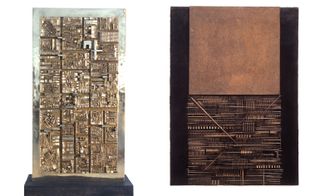
The Italian’s works – resplendent in burnished bronze – are highly intricate and imposingly tactile, referential of anachronistic mysticism and architecture. Pictured left: Grande Tavola dei Segni, 1961–62. Right: Cronaca 3 Ugo Mulas, 1976
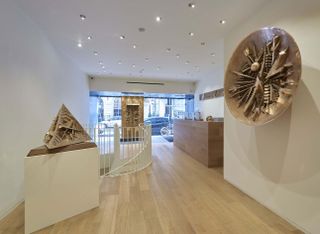
Over two floors, the show includes early explorations in the interpretation of language and signs; Pomodoro’s reconstitutions of the themes of Fontana’s mid-century spatialist art movement; and more contemporary works
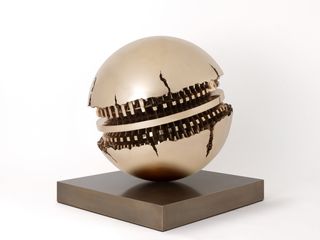
Sfera, 2013, is a particularly pointed example of Pomodoro’s embrace of spatialism; cracked open to reveal an inorganic core, the work’s surface is seemingly ruptured to reveal the nucleus
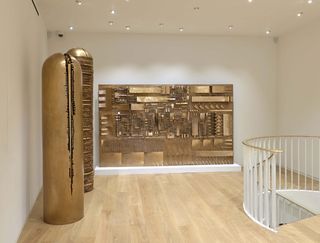
’After the success of the ground-breaking retrospective of Arnaldo Pomodoro in our Paris gallery in 2009, we couldn’t wait to bring these sculptures to London,’ says Ursula Casamonti, Tornabuoni Art’s director
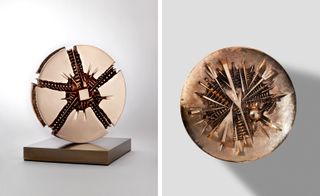
Pictured left: Disco, 2014. Right: Disco concavo, 2011
INFORMATION
’Arnaldo Pomodoro’ is on view until 16 April. For more information, visit Tornabuoni Art’s website
Photography: Prudence Cuming. Courtesy Tornabuoni Art London
ADDRESS
Tornabuoni Art London
46 Albemarle Street
London, W1S 4JN
Wallpaper* Newsletter
Receive our daily digest of inspiration, escapism and design stories from around the world direct to your inbox
-
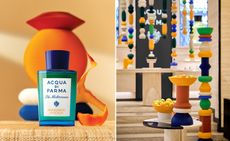 Discover Acqua di Parma’s new Mandarino di Sicilia fragrance at Milan Design Week 2024
Discover Acqua di Parma’s new Mandarino di Sicilia fragrance at Milan Design Week 2024Acqua di Parma and Fornice Objects bring the splendour of Sicilian mandarin fields to Milan to celebrate new fragrance Mandarino di Sicilia
By Simon Mills Published
-
 First look at Samba Room, London’s innovative cocktail lounge packed with Brazilian energy
First look at Samba Room, London’s innovative cocktail lounge packed with Brazilian energyLondon’s Samba Room, an extension of SushiSamba, is a dynamic bar, lounge and private dining space designed by Fabled Studio
By Tianna Williams Published
-
 Thom Browne shows how to make the perfect bed with theatrical performance at Milan Design Week 2024
Thom Browne shows how to make the perfect bed with theatrical performance at Milan Design Week 2024American fashion designer Thom Browne makes his Milan Design Week debut with a new homeware collection created in collaboration with historic linen company Frette
By Scarlett Conlon Published
-
 Yinka Shonibare considers the tangled relationship between Africa and Europe at Serpentine South
Yinka Shonibare considers the tangled relationship between Africa and Europe at Serpentine SouthYinka Shonibare‘s ‘Suspended States’ at Serpentine South, London, considers history, refuge and humanitarian support (until 1 September 2024)
By Tianna Williams Published
-
 Gavin Turk subverts still-life painting and says: ‘We are what we throw away’
Gavin Turk subverts still-life painting and says: ‘We are what we throw away’Gavin Turk considers wasteful consumer culture in ‘The Conspiracy of Blindness’ at Ben Brown Fine Arts, London
By Rowland Bagnall Published
-
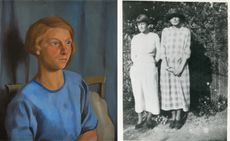 Dorothy Hepworth and Patricia Preece: Bloomsbury’s untold story
Dorothy Hepworth and Patricia Preece: Bloomsbury’s untold story‘Dorothy Hepworth and Patricia Preece: An Untold Story’ is a new exhibition at Charleston in Lewes, UK, that charts the duo's creative legacy
By Katie Tobin Published
-
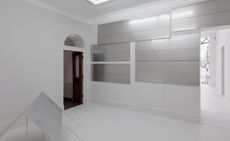 Don’t miss: Thea Djordjadze’s site-specific sculptures in London
Don’t miss: Thea Djordjadze’s site-specific sculptures in LondonThea Djordjadze’s ‘framing yours making mine’ at Sprüth Magers, London, is an exercise in restraint
By Hannah Silver Published
-
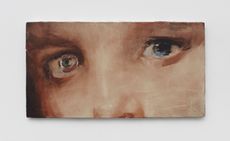 ‘Accordion Fields’ at Lisson Gallery unites painters inspired by London
‘Accordion Fields’ at Lisson Gallery unites painters inspired by London‘Accordian Fields’ at Lisson Gallery is a group show looking at painting linked to London
By Amah-Rose Abrams Published
-
 Fetishism, violence and desire: Alexis Hunter in London
Fetishism, violence and desire: Alexis Hunter in London‘Alexis Hunter: 10 Seconds’ at London's Richard Saltoun Gallery focuses on the artist’s work from the 1970s, disrupting sexual stereotypes
By Hannah Silver Published
-
 Wayne McGregor’s new work merges genetic code, AI and choreography
Wayne McGregor’s new work merges genetic code, AI and choreographyCompany Wayne McGregor has collaborated with Google Arts & Culture Lab on a series of works, ‘Autobiography (v95 and v96)’, at Sadler’s Wells (12 – 13 March 2024)
By Rachael Moloney Published
-
 Danielle Brathwaite-Shirley confronts gaming, VR and rebirth at Studio Voltaire
Danielle Brathwaite-Shirley confronts gaming, VR and rebirth at Studio VoltaireDanielle Brathwaite-Shirley has opened her first institutional solo exhibition, ‘THE REBIRTHING ROOM’, at Studio Voltaire, London
By Hannah Silver Published